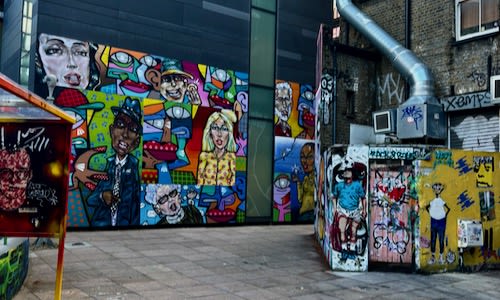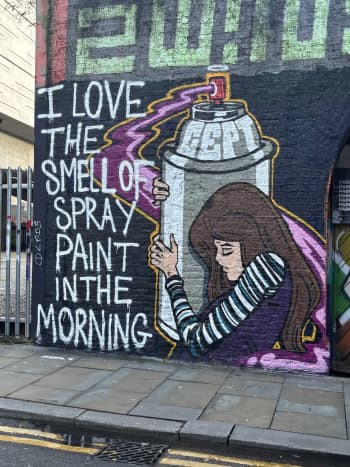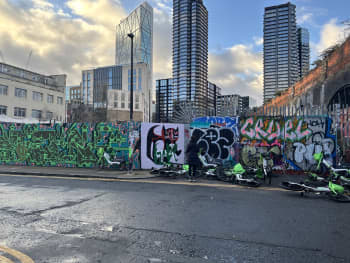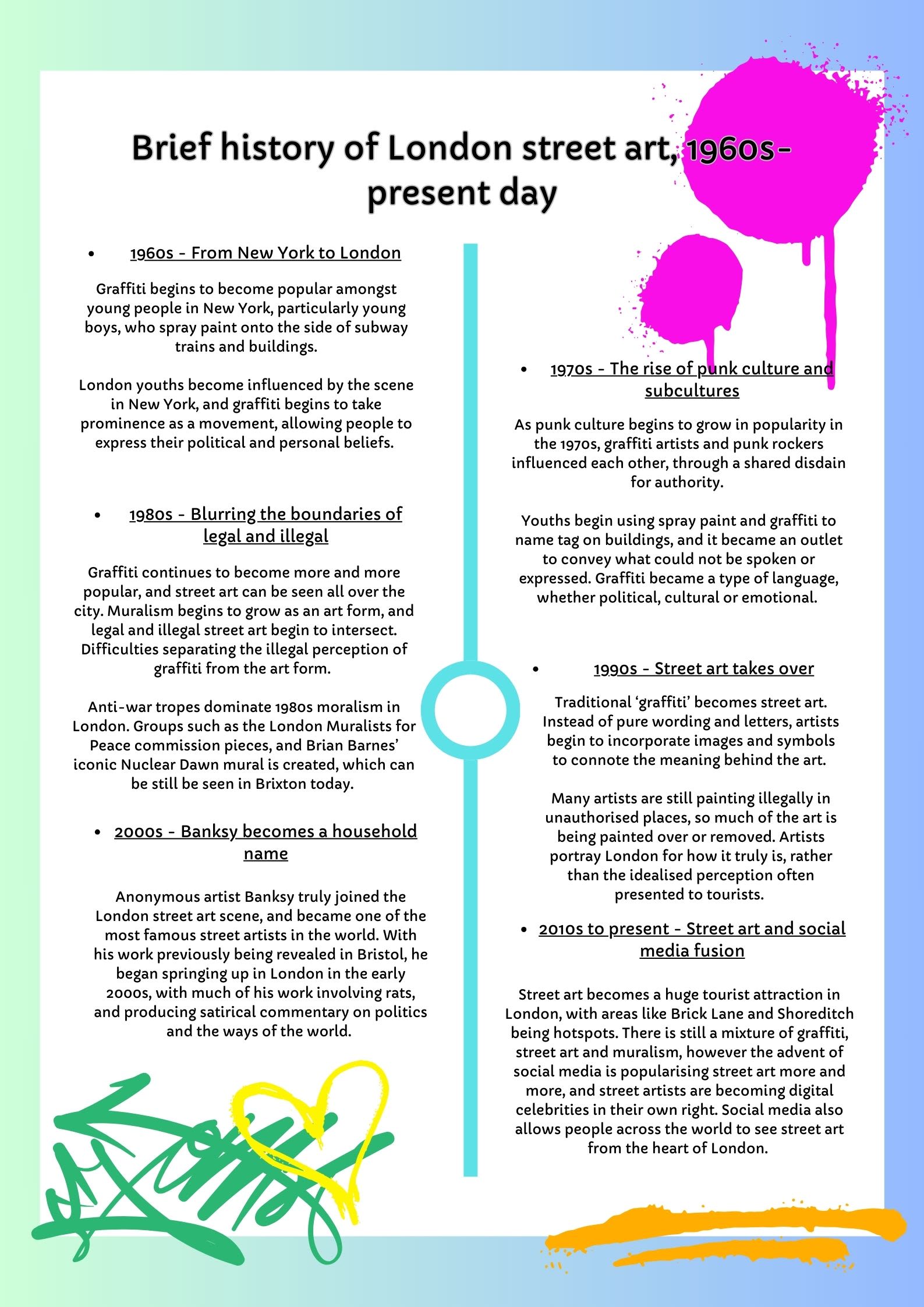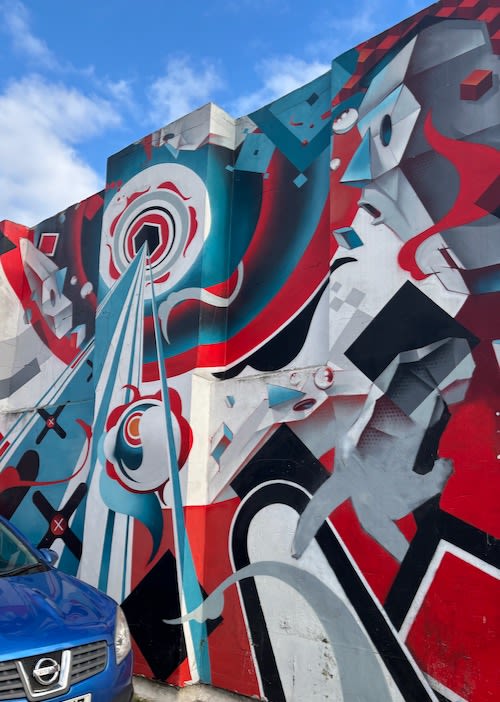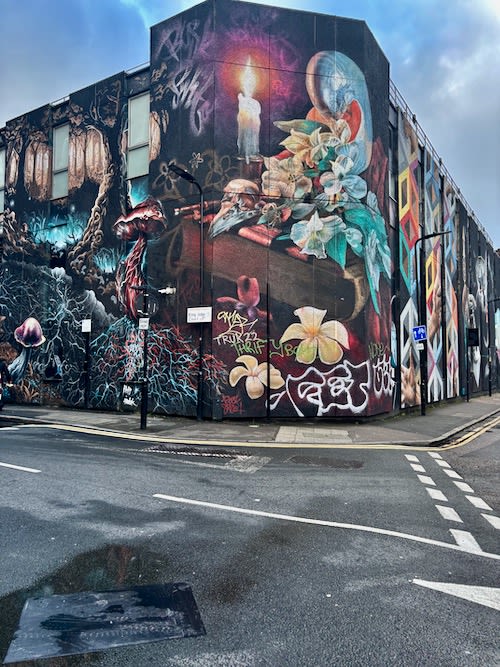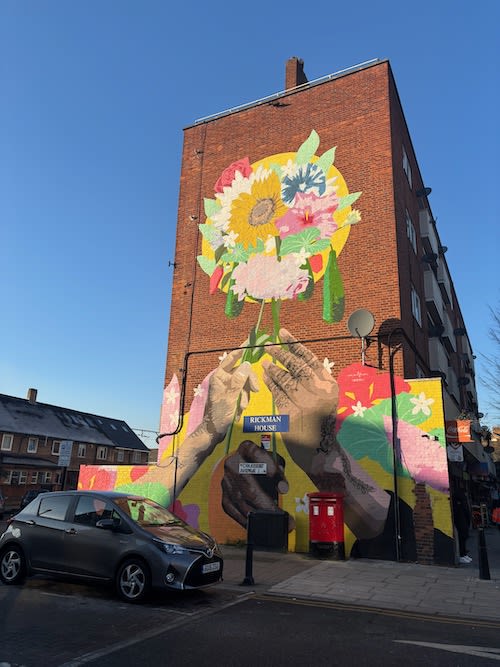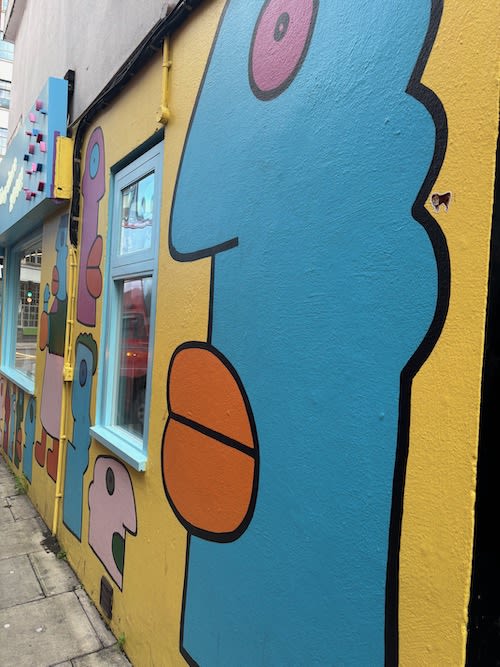Scruffy or skill? Street art in London
Its impact in the city and the challenges faced by modern street artists
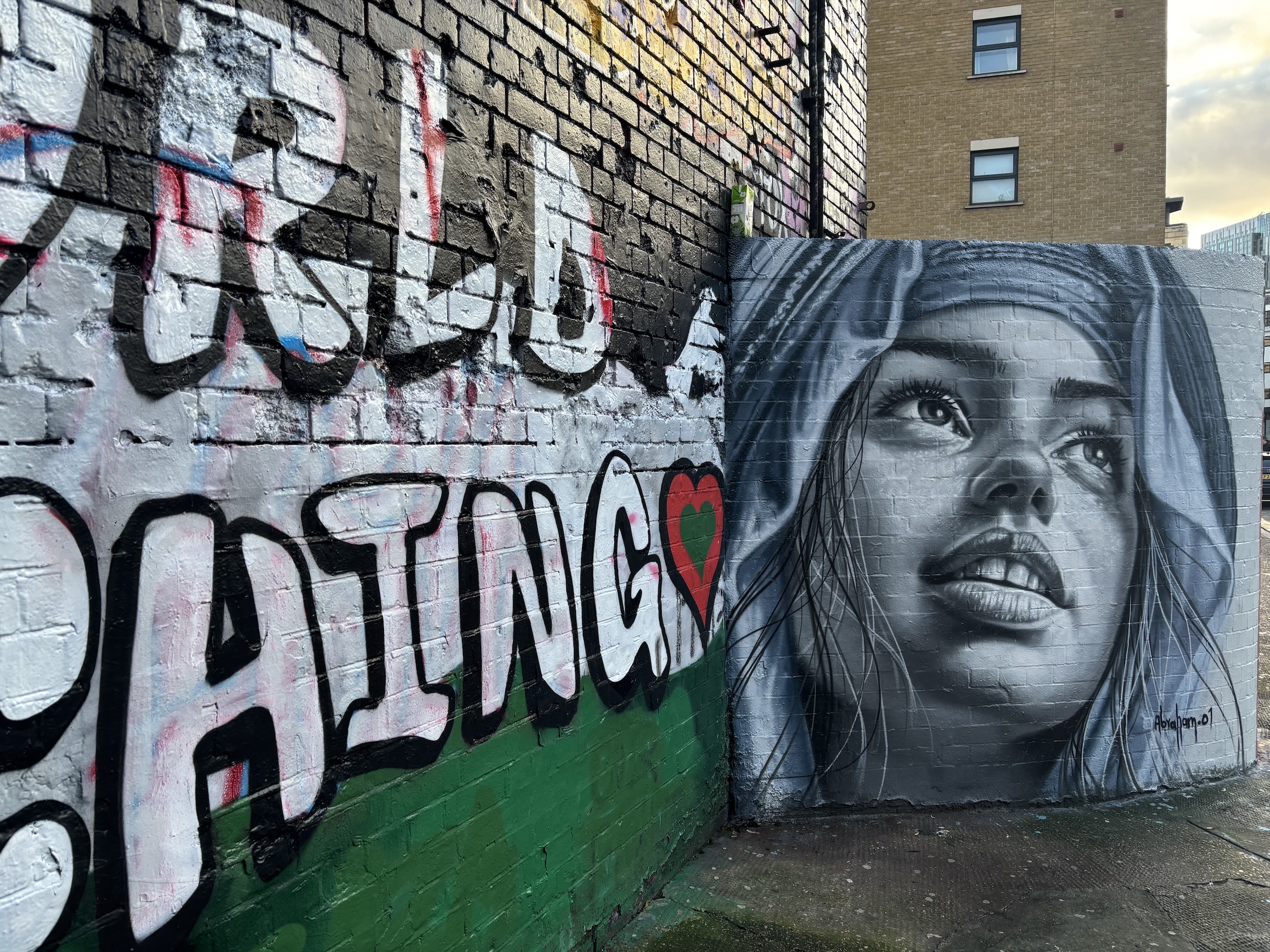
“Street art is nothing else but urban poetry that catches someone’s eye. Being a street artist is impossible because the city itself is the artist."
When you think of street art, you might immediately think of household names such as Banksy or the New York art scene, from which emerged pop art legends like Keith Haring.
However, the much wider ranging street art scene in London has thrived for many years, rising as subcultures such as punk rock began to dominate in the 60s and 70s. Plus, with the advent of technology and social media, its popularity in the vibrant capital has soared in the past few decades.
Areas such as Shoreditch, Camden, Spitalfields and Walthamstow often top guidebooks and travel sites as the best places to experience street art in the city because of their edgy, hipster feel, and a quick stroll through these spots will reveal murals and spray painted images alike.
But why is it important that we recognise and discuss street art, and what does it bring to London?
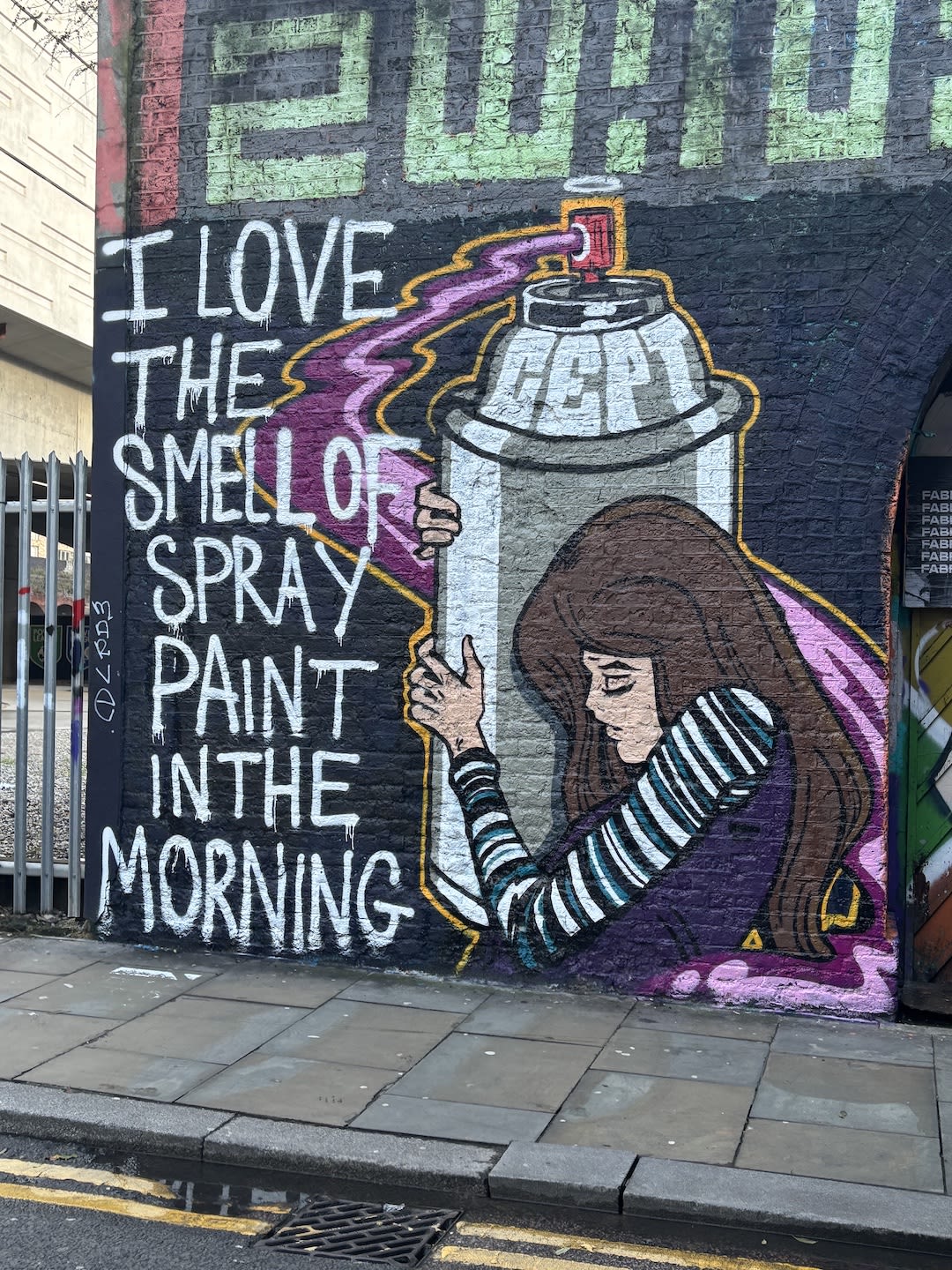
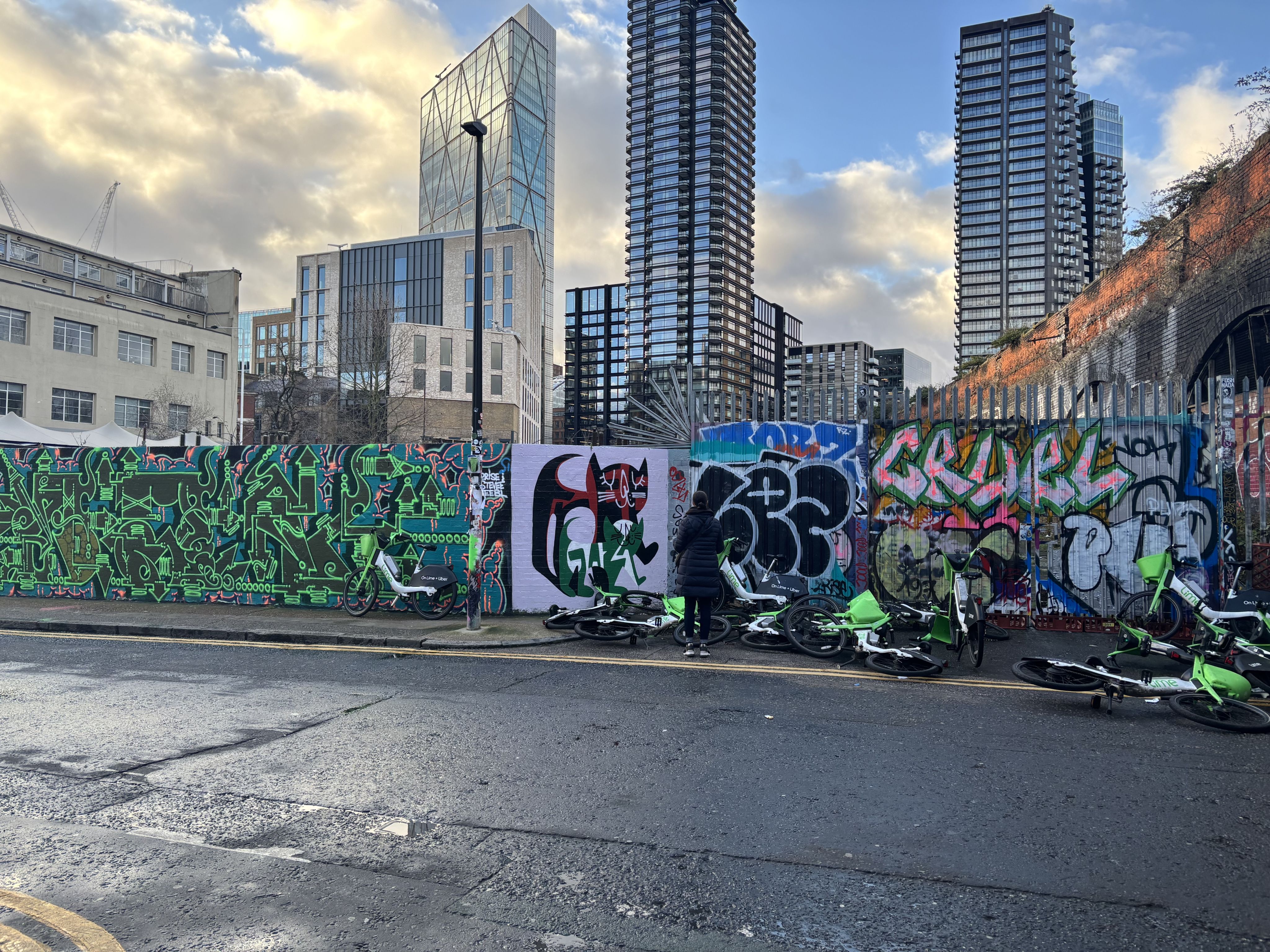
"Street art adds colour and brightness to the world and creates a sense of community to connect with local people."
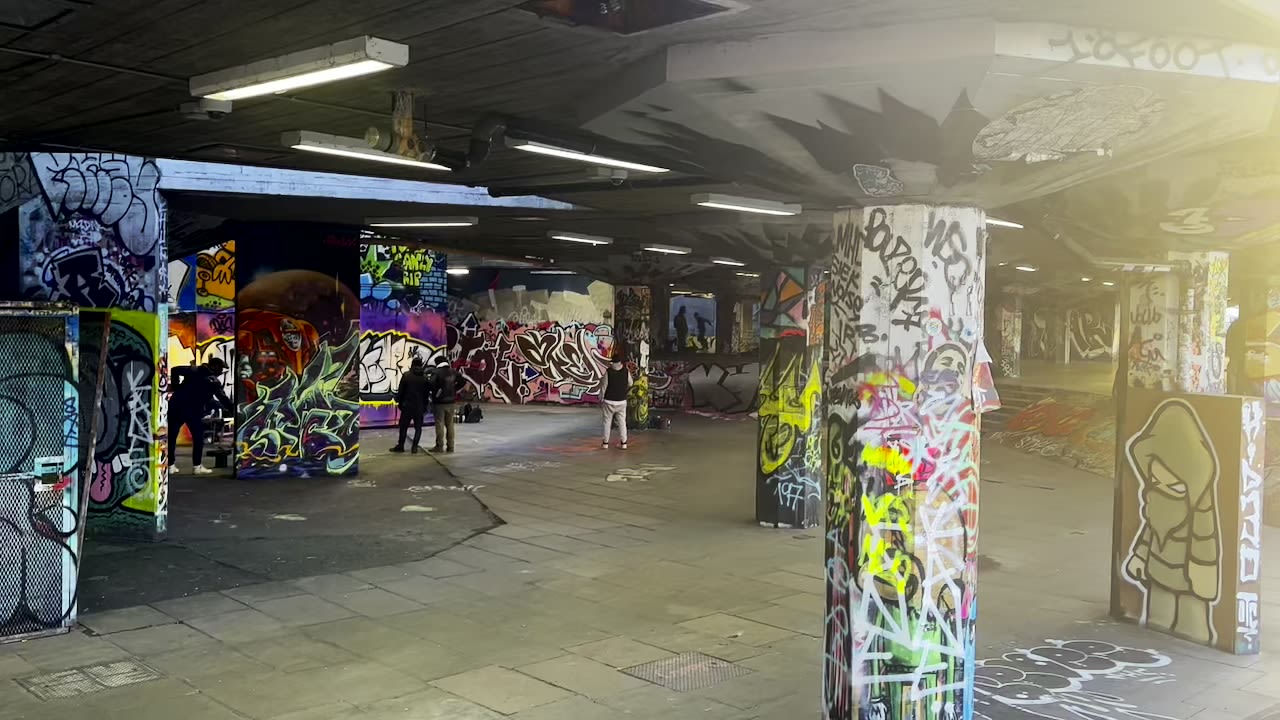
Timeline of the history of London's street art scene.
Timeline of the history of London's street art scene.
Street art in Peckham. Photo credit: Natasha Cocksedge
Street art in Peckham. Photo credit: Natasha Cocksedge
Street art in Shoreditch. Photo credit: Natasha Cocksedge
Street art in Shoreditch. Photo credit: Natasha Cocksedge
'Bouquet,' by street artist ATMA, in Stepney Green. Photo credit: Natasha Cocksedge
'Bouquet,' by street artist ATMA, in Stepney Green. Photo credit: Natasha Cocksedge
Growth in London's street art popularity
Street art, both in London and all over the world, has historically been a response to the environment that people find themselves in .Just as during the Vietnam War, there was an outpouring of political music and anti-war messaging, street art is the result of external and internal factors from the surrounding world.
Graffiti and street art culture in London, as interlinked as they may be, were heavily influenced by the scene in New York, and truly began to take shape throughout the 1970s and 80s, although wall writing had existed in the city in many forms before this.
All street art across London is not identical, and particular areas have unique characteristics to them, which are linked to how people living in a particular area think or feel.
Areas such as Hackney, Bethnal Green, Shoreditch and Brick Lane are known worldwide for their depictions of street art, and they attract both street artists and tourists alike, who want to contribute to the ever-expanding street art world in the city, and appreciate it.
Particularly in the past two decades, bar culture in London has helped the street art community to grow and thrive. Artists would congregate in now famous places, such as Dragon Bar, where Banksy emerged from, as well as Monty's Bar in Brick Lane. It was in these spaces that artists would meet and drink together, and is a driving factor in nucleating the street art into the spaces, such as Shoreditch and Brick Lane, which are now renowned for their array of street art.
Thomas Schoffelen is the co-founder of Street Art Cities, a digital platform which connects street artists and their work across the world, and helps people to explore the street art around them.
For Schoffelen, street art is incredibly important, and its approachable and accessible nature means it will always have a place in London.
"I think its so popular because you don't need to go into a gallery or a museum, you can just come across a piece of street art, and it makes you think, that's its purpose."
Thomas Schoffelen, co-founder of Street Art Cities speaking about the history of street art in London, and its growing popularity in recent years.
Thomas Schoffelen, co-founder of Street Art Cities speaking about the history of street art in London, and its growing popularity in recent years.
Videographer and street art and graffiti culture specialist, Doug Gillen, speaks extensively about the influences of politics, cultures, communities and people's personal emotions on shaping the vast variety of street art in London.
"You can see the differences between where you would find particularly politically motivated or charged or socially charged or really energetic authentic street art or graffiti to heavily commercialised, sanitised, pre prescribed, sanctioned forms of public art or muralism or street art. You can see that in the way that these two different forms of messaging communicate to us, and what and tell us about how people feel about the space that they're in."
Particular moments in London's history have also been significant in modern street art, and have helped to form a growing interest, both domestic and international, in the art form's place in the city.
Gillen highlights the 2012 Olympic Games as a key moment for London's scene, both positively and negatively. While banners were hoisted up in Brick Lane, welcoming tourists to "the home of UK street art," London's street artists were being warned by police to stay away from the Olympic Village, and much of their work was covered or removed to fuel a desired international perception of the city. However, for Gillen, and many others who had never previously engaged with the art form, this was eye opening.
"Things were really different and raw, and that was a huge moment for the culture, this mad awakening of how people were now starting to engage with the street and something that felt really new."
Community and local cultures are also enormous influences on street art in London, and the impact that these projects can have on local residents and people living nearby are an important characteristic of London street art. French street artist and muralist ATMA has been working in the city for 20 years, and has 25 years’ experience in street art. Having developed his passion for the art form as a teenager, he states that his mission as a street artist is to channel his love for London into his work and help the city and its communities flourish in return.
This love can be seen in his projects which span across the city, with notable works in areas such as Walthamstow, Bethnal Green, Brixton and Shoreditch, where other street art can also often be found. His murals are also at the heart of many London communities and are often commissioned and created with the help of residents, to reflect the environment and people who live around it.
A key example of ATMA’s community driven spirit is ‘Bouquet,’ an enormous mural on the side of an apartment block in Stepney Green, East London. The project, which was funded by the national lottery and supported by charity Magic Mix, is a reflection of the 5,000 people and 15 different nationalities living on the nearby Bancroft Estate. It depicts the flowers, plants and vegetables grown on residents’ balconies and in the community gardens, and its primary aim was to bring the community together and make people happy.
London based street artist ATMA speaking about his project 'Bouquet,' and how it started.
London based street artist ATMA speaking about his project 'Bouquet,' and how it started.
Challenges faced by street artists
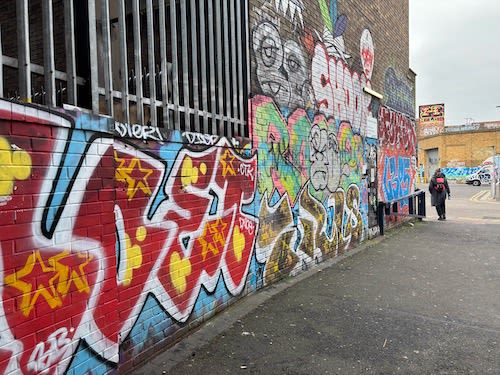
Graffiti is words or pictures that are written or drawn in public places, for example on walls or posters.
Street art is art produced in a public space without formal permission.

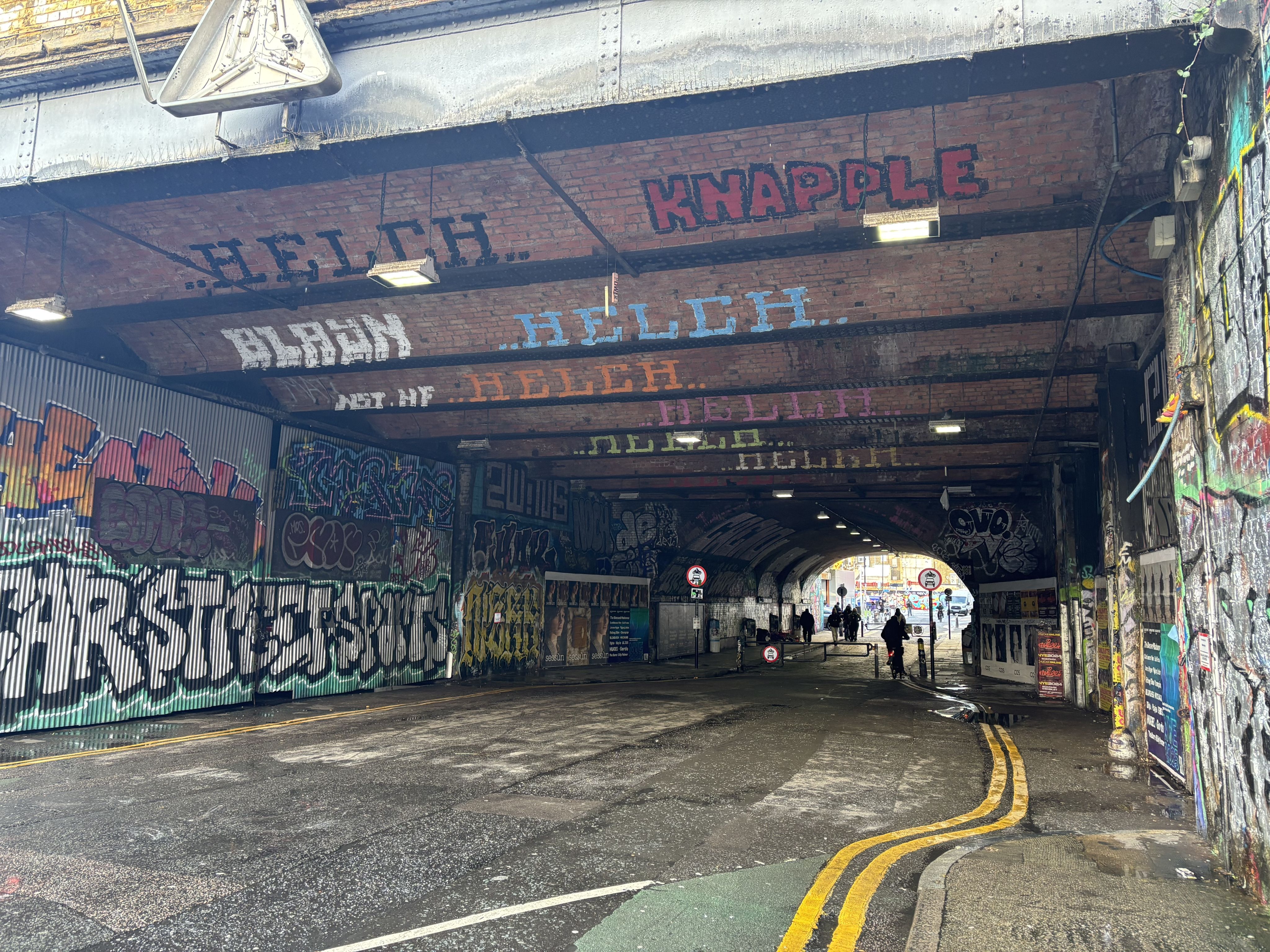
The intersection of graffiti and street art
Graffiti and street art have been associated with each other for decades, and this comparison is a point of contention among some London street artists and communities.
Across London, graffiti is commonly seen near roads or sprayed onto the side of public transport, and a surge in graffiti was recorded during the COVID-19 pandemic. Many London authorities, particularly Transport for London (TfL) commonly complain of 'vandalism' and the costly impact of managing graffiti on their public services. Alternatively, street art is often viewed in a much more positive light, reflected in the booming street art tourism industry, particularly in East London. However, the intertwined roots of both art expressions commonly leads to the two being confused, and some believe that street art also carries the same tones of vandalism.
ATMA speaking about how graffiti and street art are connected.
ATMA speaking about how graffiti and street art are connected.
For Doug Gillen, the interlinking of the two art forms is a natural combination, and is positive. For him, graffiti comes with a subculture, over which contributors are extremely protective of, which innately separates the two art forms from one another. However, both street art and graffiti undoubtedly share the same roots and are influenced by one another, and for Gillen, London's artist spaces would benefit from welcoming both art forms at once.
Legality of spaces
Finding the space to create street art in London, even when it is for the benefit of local communities and economies, can be difficult.
Although there is much more acceptance of street art in London nowadays, many street artists are still challenged by the lack of spaces to create on offer to them. A key characteristic of much of the city's street art is its transient nature, and it is uncommon for artists to paint over another artists work. In general, this is widely accepted among the community, such as at London's longest legal graffiti wall, Leake Street Arches, by Waterloo, where artists are told that work may last a few weeks at most, to foster the growth of artistic expression and street painting in the city.
However, the legality of spaces remains an issue. The challenge of comparing and contrasting graffiti and street art, as previously discussed, is the issue of stereotype. At its core, this is because graffiti is traditionally done without permission, so is seen as vandalism. However, in official terms, street art is only legal if done with the permission of the property or building owners, or if it is commissioned as a project, as seen in ATMA's work. It is for this reason that many street artists choose to remain anonymous, with Banksy being the most famous example of this. Many in the street art community feel more policies need to be relaxed to allow the art form to grow in a safe and respectful manner.
Thomas Schoffelen speaking about the legality of spaces for street art.
Thomas Schoffelen speaking about the legality of spaces for street art.
Dr Lee Bofkin is the CEO and co-founder of Global Street Art, an organisation which exists with a mission to "live in painted cities". It organises hand painted advertising across Europe, and since 2012, has created more than 3000 non-commercial legal murals, many of which can be seen in housing estates across London. For Lee, although a heightened acceptance of street art has made people less likely to prevent it from happening, local authorities in the city often present challenges, as many of them do not share a united front on street art. He believes that some councils have a broad mindset, and are happy to allow artists to work in their borough. However, councils such as Newham have more lengthy procedures to approve street art projects, often involving the Local Planning Authority. While the council encourages street art, and believes it is important to reflect the borough's identity and engage communities, the lengthiness of this process often leads to street art being created out of these terms, hence making these pieces 'illegal' within Newham.
"We should all be invited to kind of challenge what's happening around us, because we have a voice. And these freedoms and these spaces are being taken away and controlled daily. I think people don't really realise the impact of what happens when you lose these freedoms, and suddenly these spaces that were once yours are now privately owned and heavily monitored."
Newham, however, does strive to encourage street art to be created in the borough, and in 2019, launched Shape Newham, which installs community projects in Beckton, East Ham, Forest Gate, Green Street, Little Ilford, Manor Park, Maryland and Plaistow, with the aim of regenerating the areas. The council also has a Building Newham's Creative Future cultural strategy, which in August 2024 saw a street art series commemorating guitarist and singer Jimi Hendrix installed in Forest Gate. This indicates that although street artists do face some challenges when working with London councils, many of these authorities are keen to create spaces for street art, and value the art form as an important part of the city's communities.
"You can be a woman, or a person of colour, and it doesn't matter, because actually all you need is your own profile. You just pull up a sketch every single day in a notepad, and suddenly you've got 60,000 people liking and sharing your work."
Thomas Schoffelen speaking about the impact of social media on popularising street art.
Thomas Schoffelen speaking about the impact of social media on popularising street art.
Street art on the side of a cafe in Shoreditch. Photo credit: Natasha Cocksedge
Street art on the side of a cafe in Shoreditch. Photo credit: Natasha Cocksedge
A digital age of London's street art
Social media has also helped to raise the profile of street art. In London 20 years ago, the infancy of the internet allowed artists such as Banksy and Shoreditch Tom to begin sharing and communicating their work to people outside the city. Now, the age of social media allows street artists to share their works with thousands of people, and has contributed to the tourism boom of street art, particularly in East London. According to Dr Bofkin, the growing popularity of street art drives people to choose London as a travel destination, and there has been a surge in events and festivals organised to celebrate the art form. Global Street Art organises the London Mural Festival every September, which brings together over 100 murals by international street artists displayed across the city, connecting communities and global visitors with London's art scene and diversity.
According to Gillen, the advent of social media has also introduced a democratisation of street art, which before was predominantly male and white.
This culture of sharing street art online has had a largely positive impact on street artists, and has allowed many to make a profession out of their work. Social media helps many artists to get recognised, which leads to commissions. As a result, street artists can support themselves financially through their work, allowing the art form to continue to grow in the city, and promotes street art culture to develop and flourish even more.
Street artists and street art communities are hopeful for the art form's future in London. For them, the expansion and development of social media and the current digital age offers many opportunities within the city, whether that means that street art as a profession will establish itself further, or London's artwork will gain an even greater place on the global stage. Whatever the case, it appears that street art in London is here to stay, and its influence on the city and its people is evident and painted on its walls.
